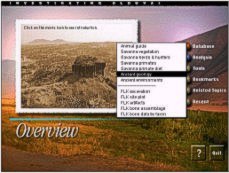
Figure 1: The 'Overview' is the main interface page. You can click on the movie, or press one of the buttons. The 'Database' button leads to the main menu
Cite this as: Gowlett, J. 2002 "Investigating Olduvai: Archaeology of Human Origins" - 4 years on: A review by John Gowlett, Internet Archaeology 11. https://doi.org/10.11141/ia.11.6
Investigating Olduvai: Archaeology of Human Origins by Jeanne Sept. A multi-media, interactive CD-ROM. Price $32.95. Order details from Indiana University Press. ISBN 0-253-33219-2. Minimum configuration: For Macintosh computers 68040 microprocessor, 8MB RAM, 200K. For Windows Pentium, 16MB RAM, 200K. Sound card required.
How impressive is Olduvai Gorge? For me, enough to remember for a lifetime. For Clive Gamble, who visited recently, far more than in any photograph. For generations of students, though, Olduvai is little more than a 'site' illustrated by photographs in an introductory textbook. How then do we get across the scale and importance of Olduvai? Jeanne Sept has addressed this in a CD which allows exploration of Olduvai from a number of different perspectives, including geology, history and animal life as well as the archaeology. Sept, based at Indiana University, was well placed to do this, as a palaeoanthropologist widely experienced not only in human origins research but in the range of African environments that are relevant to the background of hominisation. Indiana also has a long history of fostering electronic approaches to learning, establishing IHETS (Indiana Higher Education Telecommunication system as early as 1967 (a Conference at which Sept spoke; see also http://www.ind.net/). Not surprisingly, Indiana University has a Teaching and Learning Technologies Lab. which collaborated in producing the CD.
For Olduvai the results are plain: my own students declare roundly that even since its publication in 1997, this CD has brought the Gorge to life for them, and the obvious response is to seize on the CD and use it to maximum effect. This doesn't mean that all teaching problems are solved, because clearly, too, there is a trajectory of electronic development, and CDs themselves represent a transient form. It seems fairest to start from the point that this is a pioneering work, based on a long history of development (beginning in 1990 as Jeanne Sept kindly confirmed), and to use it as a springboard for thinking about the issues for archaeology and palaeoanthropology.
CDs are a useful package; on the scale of a book, but allowing different possibilities, particularly that of roaming at will, choosing one's own path rather than reading from beginning to end. The CD author has control of the multimedia possibilities, but to an extent is guided by the ethos of the medium. Visual impact usually comes above traditional detail, even in encyclopaedias. Filmclips, however short, and however small the frame, are certainly used to squeeze out a thousand words. One result is that, in academic terms, multimedia CDs tend to be entry level. They do not replace major books, although for Olduvai it might well be useful for the advanced student if Olduvai Gorge Volume 5 were available for £15 on CD, rather than £110 in hardback. Such factors ensure that a CD such as Sept's Investigating Olduvai must be a compromise, but one that can build in the flexibility to have an appeal at different levels.
The CD is organised around a main interface page, which allows an overview filmclip to be played (Fig. 1). This is one of about 35 QuickTime movies accessible from various still images by pressing a filmclip button. Lodged together behind the scenes in a folder, these are all QuickTime movies ranging from 5kb to 20kb in length. Some are supported by voiceovers held in a small number of soundclips.

Figure 1: The 'Overview' is the main interface page. You can click on the movie, or press one of the buttons. The 'Database' button leads to the main menu
The Overview frame holds a row of buttons of which the most important are 'Database' and 'Analysis'. Other categories include 'Tools', and 'Bookmarks', 'Related Topics' and 'Recent' - themselves all tools of one kind or another. This is an interesting classification because it points to a particular approach - not a sequential introduction to Olduvai and all its ramifications, but rather a worldview that starts from Methodology with a capital letter. Anyone opening Database will find that the first heading is Animal Life, not the Geology or History of Olduvai Gorge which might give the setting. Similarly, Analysis has to be started with the proper worldview - a theoretical interpretative perspective. You are promptly told that many of the questions first posited by Mary Leakey are still unresolved. There are several issues here. One is that the scope of the CD is far broader than Olduvai itself - 'Archaeology of Human Origins' is a good subtitle. Next, that this broad range of data - about predators, primates, nesting sites and so forth - must come at the expense of some information about Olduvai itself. Then that the theoretical perspective has to be a particular one - though one that clearly points out different views, it also chooses to be an ecological approach with a large emphasis on the role of the modern animal species that give some analogue for ancient bones (Fig. 2).
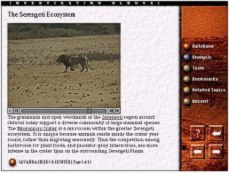
Figure 2: The modern ecosystem is fully covered, opening eyes to the potential complexity of the past
In the background, there is also a taphonomy manual. To repeat the message, Methodology is writ large - and the whole point is that this is a message to get across to students through practice (Fig. 3). The very first thing the CD does is to prompt the user to set up a fieldbook (Fig. 4) for handling the data which will be selected and analysed (perhaps prompted by some teacher who sets assignments!).
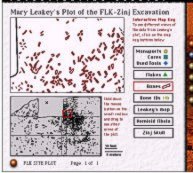
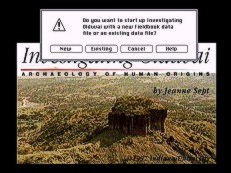
Figure 3: Here you start on the work (left) Figure 4: The CD is insistent that you do some work, strongly prompting you to open a fieldbook (right)
The dataset to be employed is that from FLK, one of the most important early 'sites' at Olduvai, from Bed I, aged about 1.8 million years. Here there are thousands of artefacts, many bones, and the remains of two famous hominids whose names keep changing - Australopithecus or Paranthropus boisei (formerly Zinjanthropus), and Australopithecus (until recently, and still in the CD, Homo) habilis. Basically, you choose your frame of operation, select your materials, and get working.
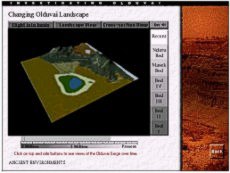
Figure 5: You can fly through the geology
Now perhaps one comes to the nub of it. This is a post-excavation module dedicated to a set of material that most people will never handle for real. It is set against the backdrop of Olduvai and all its wonderful geology, investigation history, and fauna, framed by the rules of taphonomy. The form of the visual interface is not too important, as the user has so much opportunity to explore. Probably each of us would make a different Olduvai CD (DVD or website, whatever comes next) if we had the time and energy. I might prefer to start from a map, or the history, and work out to the database, but that would be just personal preference. The one extra thing which would be on a wish-list for advanced students is an exploration of the many other archaeological sites beyond FLK, which is just one good example. Such an approach might have had to come at the expense of the atmospheric filmclips of wildlife. These may be part of the formula of multimedia, but they also add to the impression of a living place. It would be unfair to argue against their value, because an advanced Olduvai package would be a different thing. In any case, the more you look through this opus, the more depth you find to it. In the march of technological development, we might well be able to look forward to an Olduvai DVD with a variety of added content, and, given Jeanne Sept's web activities, to many accessible additional resources about human evolution. Four years on, this is still a pioneering work that is going to give excellent value in both teaching and learning for years to come.
Professor John A J Gowlett
School of Archaeology, Classics and Oriental Studies (SACOS)
University of Liverpool
Liverpool L69 3BX
Email: gowlett@liv.ac.uk